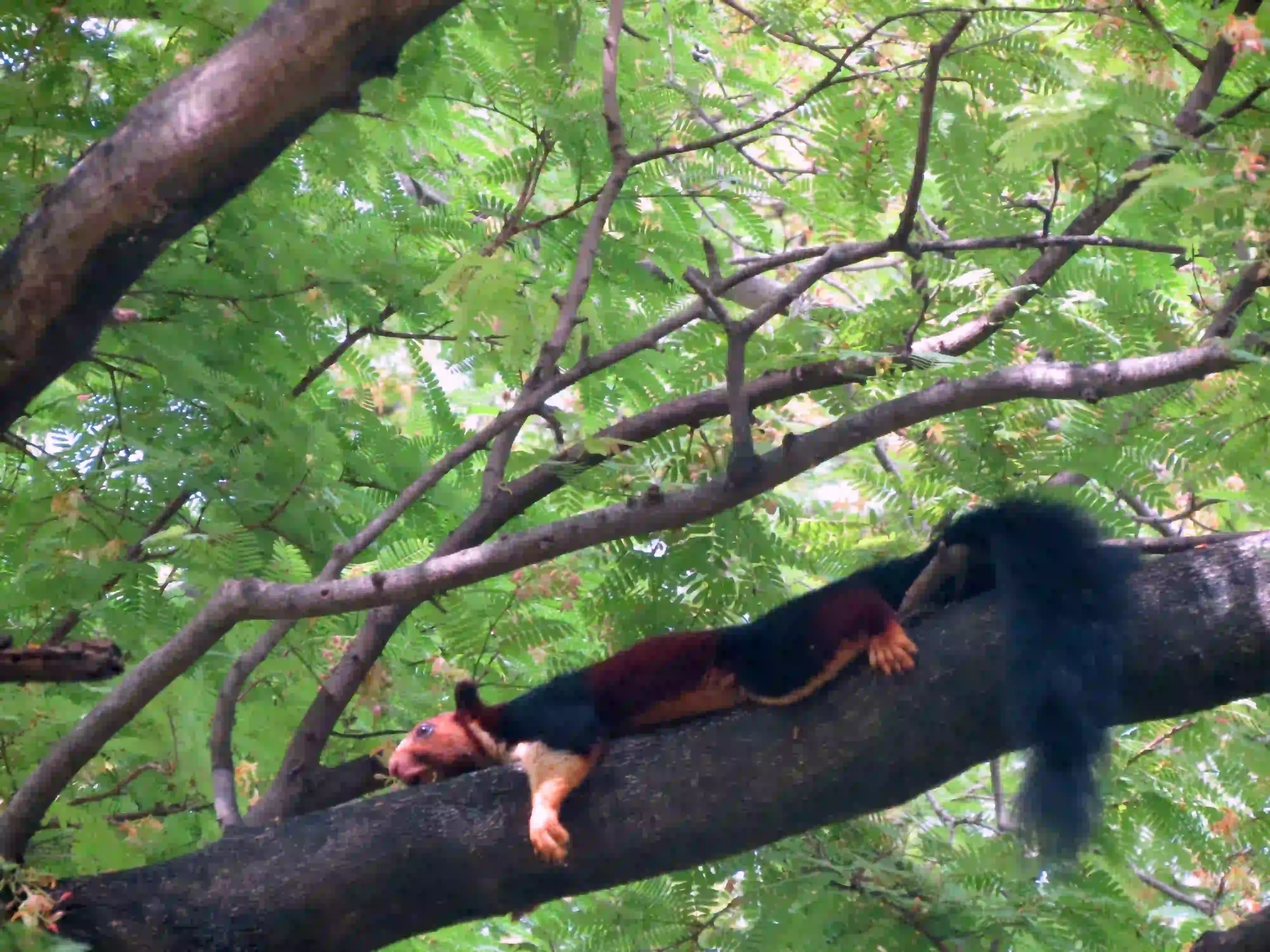Indian giant squirrel: The biggest squirrel in the world
The Indian giant squirrel is a remarkable and visually striking species of squirrel found in the Indian subcontinent. Also known as the Malabar giant squirrel, it is the biggest squirrel species in the world and is known for its vibrant and captivating coloration, which varies across different regions.
Appearance:
Indian giant squirrels are known for their
striking appearance. Their fur can vary in color, ranging from vibrant orange,
rusty red, and even shades of maroon, all the way to black, depending on the
region. The bushy tail is often as long as the body and is also beautifully
colored, displaying a mix of contrasting shades.
 |
| Indian Giant Squirrel Sleeping |
Territorial Defenders:
Discuss their territorial nature. Indian giant squirrels are territorial creatures and mark their domains with scent markings. They communicate with other squirrels using vocalizations and body language.
Size:
As the name suggests, Indian giant squirrels are quite large when compared to other squirrel species. They typically measure between 14 to 24 inches in body length, with their tails adding an additional 2 feet or more to their overall length. They can weigh up to 2 pounds, making them one of the largest tree-dwelling squirrels in the world.
Habitat:
These squirrels are primarily found in the
dense, tall, and lush rainforests of the Western Ghats and the Eastern Ghats in
India, as well as parts of Sri Lanka. They are highly adapted to an arboreal
lifestyle, spending most of their lives in the trees.
Diet:
Indian giant squirrels are primarily
herbivorous, with their diet consisting of a variety of tree fruits, nuts,
flowers, and leaves. They are often seen gnawing on fruits high up in the
trees, using their strong jaws and sharp teeth to crack open hard shells.
Behavior:
These squirrels are usually solitary
animals, although they may be seen in pairs or small family groups during the
breeding season. They are known for their agile and acrobatic abilities. They
are incredibly skilled at leaping and gliding from tree to tree using their
large, bushy tail for balance and steering.
Conservation Status:
The Indian giant squirrel is listed as a
species of "Least Concern" on the IUCN Red List. However, habitat
loss due to deforestation and logging is a significant threat to their
population.





